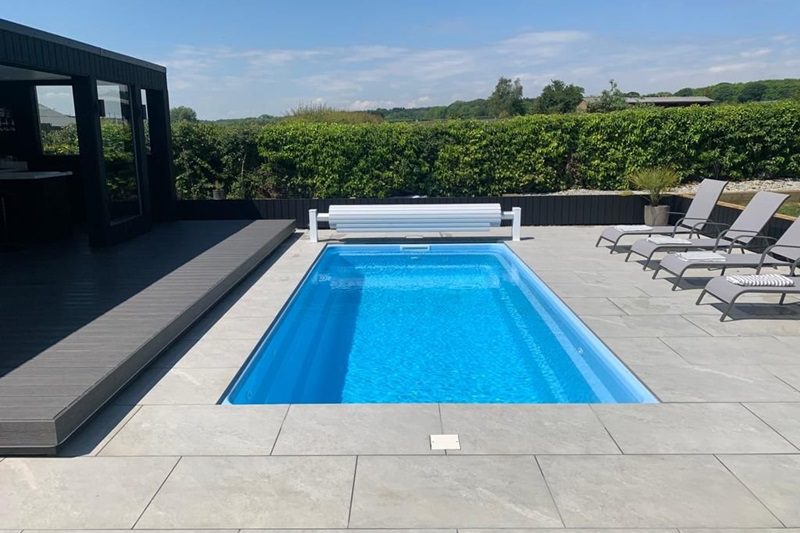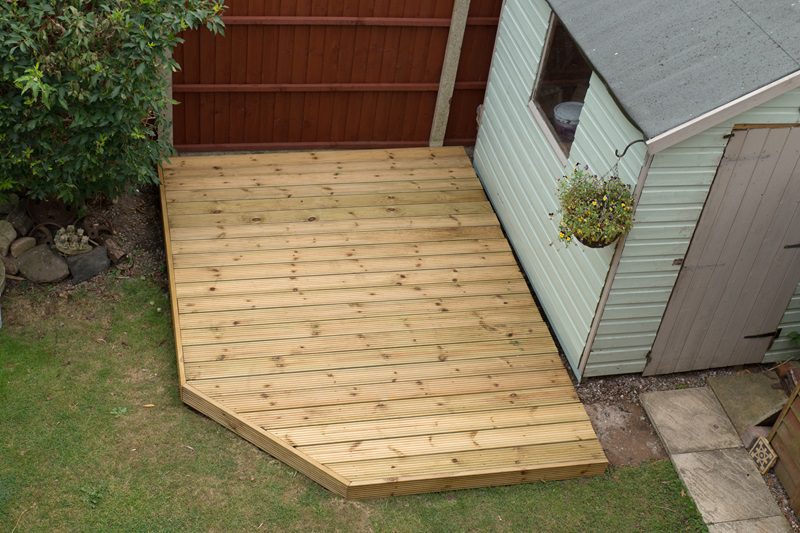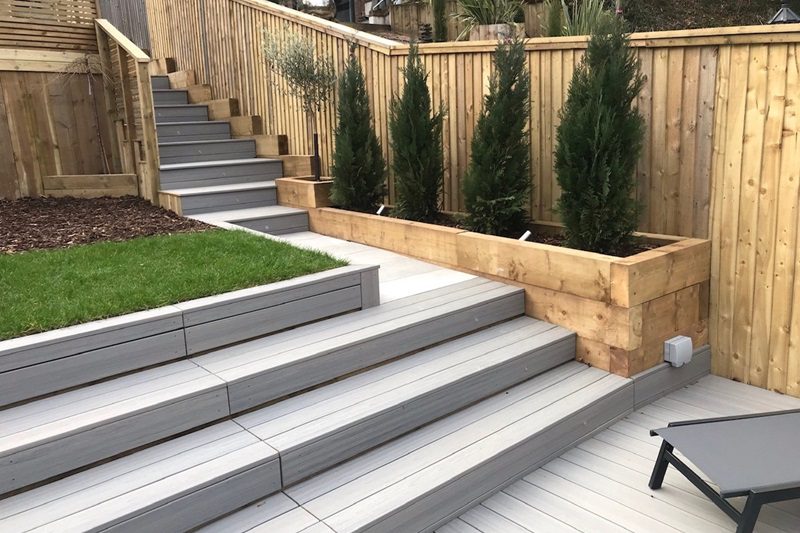Creating the perfect place in your garden for relaxing or entertaining can be both exciting and daunting. And choosing the most suitable flooring is part of the challenge!
So in this post we’ve selected the most popular choices to help you on your way:
Patio slabs and tiles
Stone slabs are one of the most popular flooring options for your garden and are extremely effective at creating a stylish, usable entertaining area. A key benefit is the wide variety of designs and colours available, which means you can select a style of slab that complements both your home and your garden.
However, if you choose to use patio slabs, you need to ensure you have an effective drainage solution to allow water to run off the slabs rather than sit on top of them. A reputable installer will be able to offer advice and guidance on the best way to achieve this.
You should also be aware of the maintenance required to keep your patio slabs looking their best. Food and drink spills should be kept to a minimum, as many slabs will stain easily, and no furniture or garden decorations should be dragged across the surface as this can cause damage. You may also need to keep an eye on weeds which can grow between your patio slabs. It is important to remove these as soon as possible to avoid any damage being caused to the underneath of your patio.

Concrete
If you have a small outside area, you may be considering concrete as an easy and cost-effective option. However, be warned! Concrete does not allow for water drainage, which can lead to flooding in your – or your neighbour’s – garden. It’s also not conducive to the wellbeing of local flora and fauna, even if you do cover it with beautiful flowerpots!
Timber decking
Timber decking is also an extremely popular choice. The natural beauty of wood creates an attractive and eye-catching area that is ideal for relaxation and entertaining.
Although beautiful, timber decking requires regular maintenance to keep it looking good and remaining safe. Timber treatments will need to be applied on a yearly – if not more – basis and the decking will need to be swept and washed frequently to ensure the surface remains clear of natural debris that could cause damage.
It’s also worth remembering that timber decking can become extremely slippery when wet, and is prone to splitting and splintering, both of which can make for hazardous underfoot conditions.

Composite decking
We’re obviously slightly biased when it comes to composite decking, but we believe this to be the best material choice for your new garden area. It mirrors the beauty of real wood, but without the associated maintenance. It requires only an occasional wash to keep it looking like new. It is also slip resistant, splinter free, and rot and split resistant, making it a safe, comfortable surface underfoot.
Over the past few years composite decking design has progressed significantly, and there are now many different styles and colours to choose from. So whether you have a traditional terrace, country cottage, or modern detached, there will be a composite decking board to suit.

Get some advice
Regardless of which material you choose, it’s a good idea to talk to an expert first to ensure you’re aware of the pros and cons of your choice.
If you’d like further information about composite decking, our knowledgeable team is on hand to offer advice and answer any questions. Simply call 01978 667 840 or email enquiries@ecodek.co.uk today.
